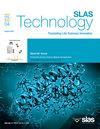开发并验证 COVID-19 PCR Master Mix 的自动制备方法。
IF 3.7
4区 医学
Q3 BIOCHEMICAL RESEARCH METHODS
引用次数: 0
摘要
在 SARS-CoV-2 大流行期间,基于聚合酶链反应(PCR)的检测方法被广泛用于人群规模的检测。高通量分子诊断实验室需要高度的流程自动化,以应对巨大的检测需求、快速的周转时间和质量要求。然而,流程开发人员和优化人员往往忽略了制备 PCR 混合母液这一关键步骤。PCR 混合母液的构建依赖于操作员手动移取试剂的技能。手工操作会带来差异、不一致性和浪费,并可能危及数据完整性。为了解决这个问题,我们开发了一种基于液体处理器的解决方案,用于自动、可追溯且符合要求的 PCR 混合母液制备。在这里,我们展示了全自动 PCR 混合母液制备方案可以取代人工移液,即使在诊断环境中也不会影响准确性或精确度。最终,这种方法消除了操作人员造成的浪费,提高了结果质量的一致性。本文章由计算机程序翻译,如有差异,请以英文原文为准。
Development and validation of automated methods for COVID-19 PCR Master Mix preparation
Polymerase chain reaction (PCR)-based assays were widely deployed during the SARS-CoV-2 pandemic for population-scale testing. High-throughput molecular diagnostic laboratories required a high degree of process automation to cope with huge testing demands, fast turnaround times, and quality requirements. However, process developers and optimizers often neglected the critical step of preparing a PCR Master Mix. The construction of PCR Master Mix depends on operator skill during the manual pipetting of reagents. Manual procedures introduce variation, inconsistency, wastage, and potentially risks data integrity. To address this, we developed a liquid-handler-based solution for automated, traceable, and compliant PCR Master Mix preparation. Here, we show that a fully automated PCR Master Mix protocol can replace manual pipetting, even in a diagnostic environment, without affecting accuracy or precision. Ultimately, this method eliminated operator-induced wastage and improved the consistency of the quality of results.
求助全文
通过发布文献求助,成功后即可免费获取论文全文。
去求助
来源期刊

SLAS Technology
Computer Science-Computer Science Applications
CiteScore
6.30
自引率
7.40%
发文量
47
审稿时长
106 days
期刊介绍:
SLAS Technology emphasizes scientific and technical advances that enable and improve life sciences research and development; drug-delivery; diagnostics; biomedical and molecular imaging; and personalized and precision medicine. This includes high-throughput and other laboratory automation technologies; micro/nanotechnologies; analytical, separation and quantitative techniques; synthetic chemistry and biology; informatics (data analysis, statistics, bio, genomic and chemoinformatics); and more.
 求助内容:
求助内容: 应助结果提醒方式:
应助结果提醒方式:


